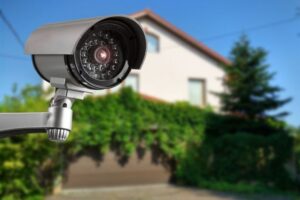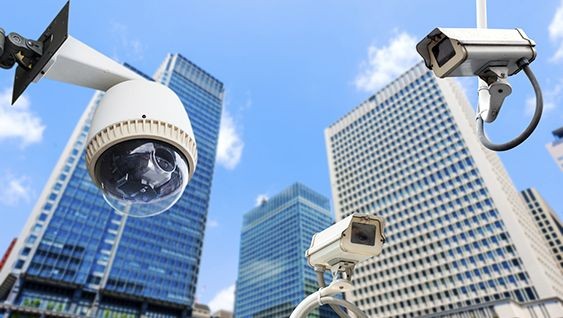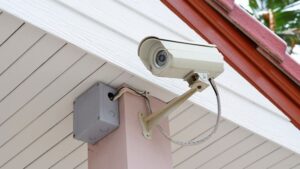Table of Contents
ToggleIntroduction
As we witness worldwide population growth, the need for urban traffic management using CCTV has increased dramatically. Some effective methods for controlling traffic congestion exist, especially in megacities, including London. In other words, installing traffic cameras as advanced monitoring devices and other common solutions has satisfied congestion problems. While CCTVs and Al-powered systems have relied on smart and cutting-edge technologies, there are various techniques to ensure citizen involvement in controlling traffic congestion. Therefore, it is essential to balance between technological approaches and non-technical ones.
Common urban traffic management measures:
Real-time traffic information systems
Nowadays, many countries employ brilliant technological solutions, such as CCTV cameras, and sensors to collect and observe real-time data in highly crowded areas to be analysed. Additionally, urban traffic management using CCTV helps authorities comprehend different traffic patterns causing traffic chaos and provides insight into the need for alternative infrastructures that trigger public willingness to use public transportation instead of vehicles, which cooperates with urban traffic management. Furthermore, some other approaches like automatic number-plate recognition using CCTV can be hugely effective in providing real-time data in terms of urban traffic management.
Artificial intelligence traffic control
AI traffic control systems have been designed to receive data from installed CCTV cameras and sensors to predict various traffic outlines and help traffic planners manage them more effectively. In addition, AI traffic systems are powered to adopt traffic light timing based on the real-time data collected from cameras, sensors, and GPS as another form of urban traffic management using CCTV coupled with AI-powered systems. Consequently, this dynamic traffic light control decreases the possibility of heavy traffic volumes and improves urban mobility. Moreover, there are advanced AI-powered CCTV cameras based on a facial recognition system that plays an important role in citizens’ safety.
Road charging procedures
In some countries, drivers should pay charges to drive on certain streets and motorways, particularly in busy hours, or heavily congested roads. It helps reduce unnecessary urban congestion and encourages residents to commute by alternative transportation options, such as buses and trains. Accordingly, these fees help improve air quality, reduce delays, and promote the use of public transit, walking, cycling, and in general leading to more effective urban traffic management.

Public transport integration with urban traffic management using CCTV
Promotion of public transportation can be possible if governments aim to facilitate public infrastructure effectively with cutting-edge technology to ensure safety, comfort, and affordability to encourage citizens to use them easily for daily commutes, which may not only resolve traffic congestion but also alleviate environmental issues related to overuse of fossil fuels and air pollution. Moreover, carpooling is another method that represents urban traffic management using CCTV which might be an alternative to solo driving. Some cities allocate lanes to vehicles carrying commuters to the same destinations, which allows carpoolers to save time and not be stuck in traffic on other road lanes. This encouragement can also be developed through websites connecting individuals to the same journey. In addition, travellers can increase the security of their vehicles by facilitating them with CCTV for car or CCTV for vans which also contributes to the enhanced safety of the roads.
Urban traffic management training
One of the key steps to overcoming urban chaos is increasing knowledge about this matter, which can be achieved through conducting educational events, campaigns, workshops, journals, and papers so that citizens can be engaged with them according to their preferences. Furthermore, children can become informed about transportation dos and don’ts and the consequences of not following traffic rules through various school training sessions teaching them how to respect pedestrian rights, to cross roads cautiously, CCTV camera functions, and the negative impacts of the overuse of fossil fuels on the environment. Thus, school programmes play an important role in raising awareness about urban traffic management using CCTV.
Review of the responsibility of CCTV monitoring in urban traffic management:

Due to the population growth all around the world, some urban traffic management techniques have failed to be practical in terms of traffic flow optimisation and time management, therefore technologies have been developed to address urban traffic congestion, such as CCTV cameras. Closed-circuit television (CCTV) cameras are used as sensors to give real-time traffic data. This data contains videos and images that cooperate in traffic estimation, vehicle counts, and pedestrian detection, which play a pivotal role in urban traffic control. Therefore, urban traffic management using CCTV is increasingly recognised as a feasible solution to mitigate urban traffic congestion problems.
Key advantages of CCTV cameras in urban traffic management:
- Traffic flow optimisation by identifying traffic patterns and congestion spots.
- Enhanced security and safety facilitate swift intervention by emergency services in case of accidents and other hazards to road users.
- Law enforcement deters reckless driving behaviours and also acts as a deterrent against vandalism and crime.
- Enhanced data-driven decision-making process for transportation efficiency enabling policymakers to accommodate future demands.
- Easy installation that they can easily be installed above intersections and motorways without adaptation to the current infrastructure.
How does urban traffic management using CCTV work?
Real-time traffic monitoring
These cameras provide accurate, reliable, and comprehensive information for traffic planners to mitigate traffic congestion problems. CCTV detection cameras have sensors with high-resolution lenses, which can accommodate visual data in the form of photos and videos transmitted as signals to urban traffic management centres for precise analysis to reduce travel timing and delays for divers to reach their destination. Thus, urban traffic management using CCTV can help collect real-time data for traffic light timing adaptation.
Data collection on large scales
CCTVs are mainly deployed across city centres, motorways, car parks, and main streets to collect data on large areas where it can be difficult or unfeasible to observe manually. By processing this data, useful information can be gained, including vehicle speed, vehicle counts, traffic patterns, and occurrence of traffic violations and road accidents. Therefore, traffic authorities can make urgent decisions based on transmitted data by CCTV detection cameras and this explains why urban traffic management using CCTV is distinguished from other approaches.
Determination of road accident factors
CCTV cameras keep a memory of occurred accidents that can help traffic controllers gain a perspective into repetitive patterns and prevent the same accidents from happening again, which as a result declines the rate of accidents. Thus, CCTV cameras can act as a traffic violation deterrent and identify contributory factors in accident records.
Conclusion
In conclusion, governments have implemented various solutions for urban traffic management, including employing state-of-the-art technological systems, AI-powered systems, and road charges to facilitate public transit, carpooling, and traffic training programmes. Nonetheless, some urban traffic management strategies seem impractical in this status quo. Urban traffic management using CCTV plays a crucial role in alleviating the problem.
CCTV cameras have benefits from traffic flow optimisation to ease of installation, increased safety, law enforcement, acting as deterrent role, and enhanced decision-making process. Furthermore, their applications vary from real-time traffic records, data collection in inaccessible regions, and forecasting accidents based on previous accident records. In general, all these preventive strategies coupled with CCTV traffic monitoring will result in reduced air pollution, traffic time management, optimised urban traffic flow, and decreased rate of traffic offences and accidents.




